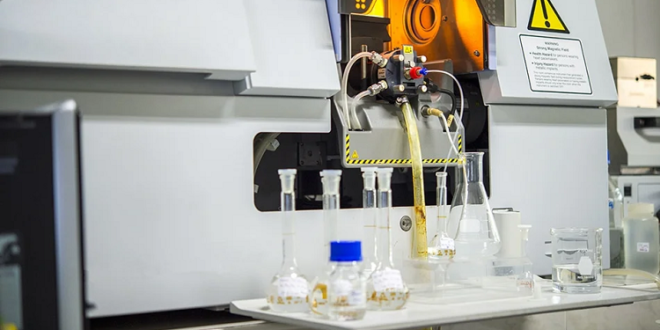Technological and scientific developments are forever advancing, providing society with contemporary findings to age-old dilemmas. One such advancement is atomic absorption spectroscopy (AAS), which has various benefits in numerous industries.
Even though this process goes back to the mid-19th century, automated workstations and new advancements in technology allow scientists to carry out these processes with high reliability and efficiency.
The process that checks the atoms’ concentration in the gaseous phase within a specific sample is known as atomic absorption spectrometry. It can detect in both solid and liquid samples by checking the amount of light absorbed by the ions in it.
Scientists can determine an element within a sample by exposing it to light at a specific wavelength and tracking the amount of light absorbed by it. The scientists with this process also determine the element’s concentration.
This method is capable of detecting around 70 different elements. It can be used in liquid and solid samples. However, the testing of solid ones requires additional processes. AAS is instrumental in the metal detection within a sample and is utilized across various industries.
As a result, this process is generally used in archaeological, mining, pharmacology, manufacturing, and many others.
Techniques
AAS is the study that explains how energy and light interact with matter. In contrast, atomic absorption spectrometry is the methodology and techniques utilized to implement this study into real-life practices. Atomic absorption spectrometry can be conducted either with liquid or solid samples.
Since this process needs atoms to exist in a gaseous form, the liquid or solid sample should be vaporized, and the analyte atoms in the sample should be atomized. Therefore, this can be done by making use of one of the two primary methods mentioned below.
Electrothermal atomizers
These atomizers are also called graphite furnace atomizers. They use a graphite tube to heat samples instead of a flame. This technique enables solid, liquid, and gaseous samples to be examined straight away.
Graphite or electrothermal furnace atomizers convey signals in an intermittent mode. These atomizers also reduce interference problems and determine a wide range of elements for almost all matrices.
Flame atomizers
These atomizers are frequently referred to as the oldest and most commonly used atomizers. They are utilized in atomic absorption spectroscopy and are most often used to examine or test solid or liquid samples dissolved in a liquid.
Utilizing this atomization procedure, a sample is initially evaporated, and it only leaves behind the dry nano-particles of it. These solid particles are vaporized and then transformed into gaseous molecules. It can then be segregated into free atoms.
The atoms are finally converted into ions at a gaseous state and can be disclosed to a low flame capable of reaching extremely high temperatures. During this final step in the process, the sample is subjected to a radiation beam. The signal is measured from the absorbed electromagnetic radiation. Also, flame atomizers continually convey signals.
Applications
AAS is used in a wide range of industries and fields of scientific study. The most frequent applications for this method are enumerated below.
Forensics
AAS has been used in fields like forensic sciences for several years. Forensic scientists can carry out in-depth examinations of gunshot powder residue, muscle and brain tissue, and blood samples with the help of this technology.
It has highly improved the precision of toxicology reports in the instances of metal poisoning. Most common sources of metal poisoning like lead and mercury are simply detectable by using this technology and can be identified even when present in trace amounts.
Agriculture
AAS is commonly used in the fields of environmental sciences and agriculture. Atomic fluorescence spectroscopy and atomic absorption spectroscopy are frequently utilized in many areas of agricultural study. These both analyze the light released from a sample instead of the light absorbed.
Generally, they are used to identify and examine potentially hazardous elements in the surrounding or environment. One of the common usages for these techniques is the analysis of soil samples and the effect of soil’s quality on the overall production of food in a specific area.
The soil samples that contain higher levels of nitrogen and phosphorus will yield greater production volume and hence produce healthier crops. This method can help determine the existence of these elements.
The quantities in which they are present can also be easily determined. Also, it can be beneficial in finding small amounts of dangerous chemicals like rhodium, which is present in water samples.
 HammBurg Be informed with latest news, reviews, entertainment, lifestyle tips, and much more.
HammBurg Be informed with latest news, reviews, entertainment, lifestyle tips, and much more.




